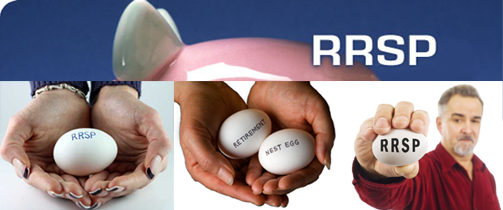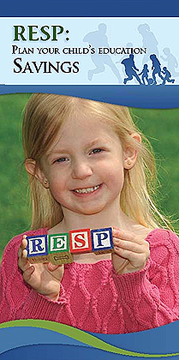- You are here:
-
Home

-
Financial Services

- Savings & Growth
Savings & Growth
RRSP:
 A Registered Retirement Savings Plan (RRSP) is a retirement savings plan that you establish, that we register, and to which you or your spouse or common-law partner contribute. Deductible RRSP contributions can be used to reduce your tax. Any income you earn in the RRSP is usually exempt from tax as long as the funds remain in the plan; you generally have to pay tax when you receive payments from the plan.
A Registered Retirement Savings Plan (RRSP) is a retirement savings plan that you establish, that we register, and to which you or your spouse or common-law partner contribute. Deductible RRSP contributions can be used to reduce your tax. Any income you earn in the RRSP is usually exempt from tax as long as the funds remain in the plan; you generally have to pay tax when you receive payments from the plan.
You set up a registered retirement savings plan through a financial institution such as a bank, credit union, trust or insurance company. Your financial institution will advise you on the types of RRSP and the investments they can contain. You may want to set up a spousal or common-law partner RRSP. This type of plan can help ensure that retirement income is more evenly split between both of you. The benefit is greatest if a higher-income spouse or common-law partner contributes to an RRSP for a lower-income spouse or common-law partner. The contributor receives the short term benefit of the tax deduction for the contributions, while the annuitant, who is likely to be in a lower tax bracket during retirement, receives the income and reports it on his or her tax return.
You may want to set up a self-directed RRSP if you prefer to build and manage your own investment portfolio by buying and selling a variety of different types of investments. For more information on eligible investments, see Self-directed RRSPs. If you are considering this type of RRSP, be sure to consult with your financial institution.
You make your RRSP contributions directly to the RRSP issuer. For more information please contact via this website.
RESP:
 A Registered Education Savings Plan (RESP) is a contract between an individual (the subscriber) and a person or organization (the promoter). Under the contract, the subscriber names one or more beneficiaries and agrees to make contributions for them, and the promoter agrees to pay educational assistance payments (EAPs) to the beneficiaries. How an RESP works? There are two different types of RESP available: family plans and specified plans.
A Registered Education Savings Plan (RESP) is a contract between an individual (the subscriber) and a person or organization (the promoter). Under the contract, the subscriber names one or more beneficiaries and agrees to make contributions for them, and the promoter agrees to pay educational assistance payments (EAPs) to the beneficiaries. How an RESP works? There are two different types of RESP available: family plans and specified plans.
The Subscriber (or a person acting for the subscriber) generally makes contributions to the RESP. Subscribers cannot deduct their contributions from their income on their tax return. If the contributions are not paid out to the beneficiary, the promoter usually pays them to the subscriber at the end of the contract. Subscribers do not have to include the contributions in their income when they get them back.
The Promoter usually pays the contributions, and the income earned on those contributions, to the beneficiaries. The income earned is paid as educational assistance payments (EAPs). Beneficiaries include the EAPs in their income for the year in which they receive them. However, they do not have to include the contributions they receive in their income.
The Canada Revenue Agency registers the education savings plan contract as an RESP, and lifetime limits are set by the Income Tax Act on the amount that can be contributed for each beneficiary (see Contribution limits). Unless the RESP is a specified plan, the RESP must provide that no contributions (except transfers from another RESP) may be made to the plan at any time after the end of the year that includes the31st anniversary of the opening of the plan. Furthermore the plan has to be completed by the end of the year that includes the 35th anniversary of the opening of the plan.
Here is an overview of how an RESP generally works.
- A subscriber enters into an RESP contract with the promoter and names one or more beneficiaries under the plan.
- The subscriber makes contributions to the RESP. Government grants (if applicable) will be paid to the RESP.
These grants can be the Canada Education Savings Grant (CESG), Canada Learning Bond (CLB), or any designated
provincial education savings program. - The promoter of the RESP administers all amounts paid into the RESP. As long as the income stays in the RESP, it is not taxable.
The promoter also makes sure payments from the RESP are made according to the terms of the RESP. - The promoter can return the subscriber's contributions tax-free.
- The promoter can make payments to the beneficiary to help finance his or herpost-secondary education.
- The promoter can make accumulated income payments.


